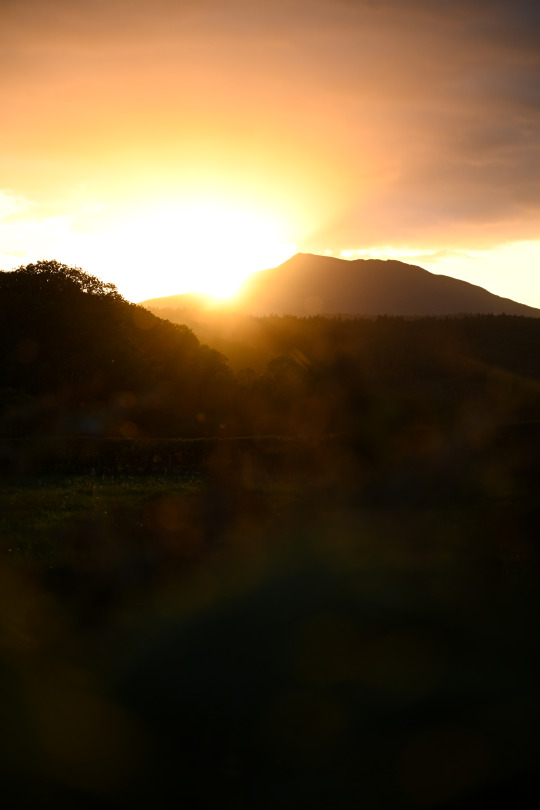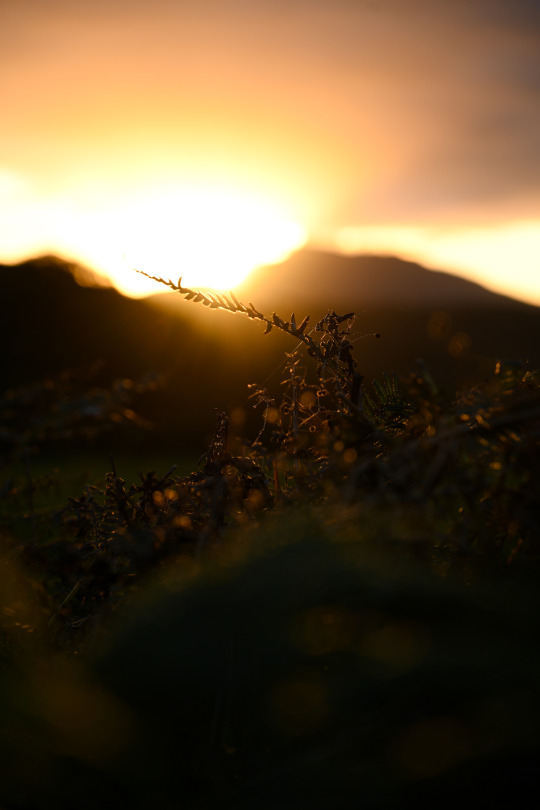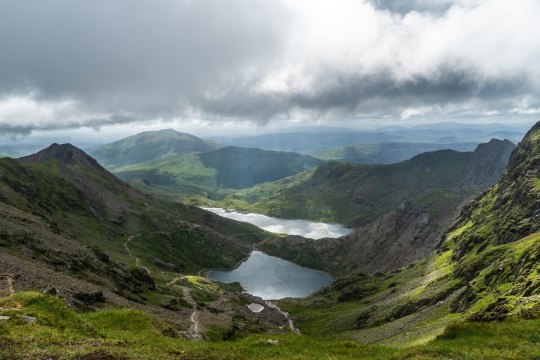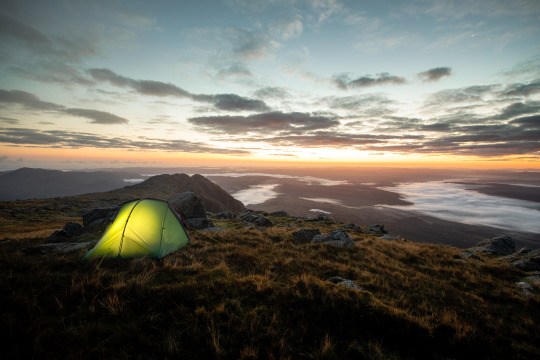#siabod
Explore tagged Tumblr posts
Text

"A Glen near Moel Siabod, North Wales" by William Henry Mander. British artist 1850-1922. Image via Amber Tree, Flickr.
2 notes
·
View notes
Text


Beautiful sunset behind Moel Siabod
#alexmurison#mountain#mountains#wales#eryri#sunset#lensblr#original photography#explore#walking#hiking#explore more#wilderness#adventure#wanderlust#walk#wander#photographers on tumblr#original photographers#landscape photography#original photography on tumblr
91 notes
·
View notes
Text
#OTD in 1952 – An Aer Lingus aeroplane, the St Kevin, crashes in Wales with the loss of 23 lives. It is the airline’s second fatal crash.
A plane crash 69 years ago claimed the lives of 23 people, and remains the worst incident of its kind to take place in North Wales. The Aer Lingus C47 Dakota had been travelling from Northolt Aerodrome in London to Dublin on the night of 10 January 1952 when it crashed into Cwm Edno on the slopes of Moel Siabod. The aircraft, named St Kevin, was caught in heavy turbulence as it flew through…

View On WordPress
#Aer Lingus#Cwm Edno#Dublin#London#Plane crash#Snowdonia National Park#St. Kevin#Wales#Welsh Regional Hospital Board and Home Office
11 notes
·
View notes
Text
Cool names of real places
A mixtures of countries, towns, and various landmarks.
Adana
Altena
Amur River
Angel Falls
Antioch
Arkhangelsk
Armenia
Aura River
Azores
Baia Mare
Baltic Sea
Barbados
Bardenas Reales
Black Forest
Cagliari
Caracas
Caspian Sea
Copenhagen
Crimea
Death Valley
Devil’s Bridge
Eboshi Rock
Edessa
El Salvador
Eleuthera
Euphrates River
Geneva
Giza
Goa
Granada
Harrogate
Inverness
Isles of Shoals
Ivory Coast
Kamaran Island
Kathmandu
Kyle of Lochalsh
Kyoto
L’Aquila
Las Vegas
Los Angeles
Moel Siabod
Navarre
Palestine
Roskilde
Roussillon
Ryazan
Saluzzo
Samarkand
Sargasso Sea
Scotia’s Grave
Senegal
Shiraz
Sierra Leone
Syria
Târgoviste
Tashkent
Tigris River
Tyrrhenian Sea
Vale of Deadly Nightshade
Xanten
Zagros Mountains
Zanzibar
2 notes
·
View notes
Text

Moel Siabod from The Horns on a February morning
5 notes
·
View notes
Text

Moel Siabod from The Horns on a February morning
1 note
·
View note
Video
Capel Curig(North Wales) da William Walton Tramite Flickr: Taken on the hill's above Capel Curig back in the ninety's on a cold sunrise morning, I miss them days. Capel Curig (Welsh pronunciation: [ˈkɑːpɛl ˈkɨːrɪɡ]; meaning "Curig's Chapel") is a village and community in Conwy County Borough, Wales. Historically in Caernarfonshire, it lies in the heart of Snowdonia, on the River Llugwy, and has a population of 226, reducing slightly to 206 at the 2011 census. It lies at the junction of the A5 road from Bangor and Bethesda to Betws-y-Coed with the A4086 road from Caernarfon, Llanberis, Pen-y-Pass and Pen-y-Gwryd. It is surrounded by hills and mountains, including Moel Siabod and Pen Llithrig y Wrach. Information by Wikipeda Artwork by William Walton & Topaz Studio 2.
0 notes
Text
Best Wild Camping Spots Snowdonia
New Post has been published on https://eazycamping.net/best-wild-camping-spots-snowdonia/
Best Wild Camping Spots Snowdonia


Snowdonia belongs to the list of the most wonderful camping destinations in the UK. This stunning National Park in north-western Wales is home to the highest mountain in England and Wales. This natural beauty also offers an escape from the hustle and bustle of city living with its magnificent valleys and lush forests. Whether you’re looking for an intimate spot by a tranquil lake or a remote campground with a panoramic view of the surrounding lands, there is undoubtedly something for everybody in Snowdonia.
If you wish to go wild camping in the area, we will share with you some of the best wild camping spots in Snowdonia. These locations promise breathtaking views, starry skies, and numerous opportunities to create unforgettable memories. This blog post will also answer a few common questions that travellers may have about this prime camping destination. So, grab your favourite wild camping tent and your sense of adventure because Snowdonia awaits you!
Top 18 best wild camping spots Snowdonia
As a vast national park, Snowdonia boasts numerous wild camping spots near its lakes, on a mountain or valley, or in the forest. We have listed below the top 18 according to our camping experience and recommendations from our fellow nature lovers. We hope you will consider our picks when planning your dream outdoor adventure in Snowdonia.
1) Rhinogydd
This mountain range is perfect for campers who prefer a remote and rugged campground. Though it has stunning views of the area’s topography and bodies of water, Rhinogydd remains a tranquil spot to enjoy the beauty and wilderness of Snowdonia. Some of our favourite places to pitch our wild camping tent include the slopes of Rhinog Fawr and near the mountain lake Llyn Du.
You should be ready to bring all the wild camping essentials because Rhinogydd is not equipped with the typical outdoor facilities or amenities. The weather conditions can also change dramatically, so remember to bring enough food, water, and emergency supplies to ensure your safety and enjoyment for the entire trip.
2) Llyn Edno
If your idea of reconnecting with nature involves a peaceful lake amidst the mountainous peaks of Snowdonia, Llyn Edno can be an excellent option. It is lesser known among the visitors in the area, but that doesn’t mean that it is subpar compared to the others in this list.
Staying in Llyn Edno will be worth your while. You can go hiking to the nearby Moel Siabod or Yr Aran. Afterwards, cool off by wild swimming in the lake’s shallow waters. We also recommend having a picnic by the shore, but keep in mind the safety rules of cooking over a campfire. At night, the sky over Llyn Edno is bright with stars and some planets visible even to the naked eye.
3) Carneddau
Wild camping in the UK isn’t complete without grabbing the chance to learn more about the history and culture in the area. Carneddau offers that and more with its Roman roads, medieval castles, and ruins of ancient settlements. As one of the highest mountain ranges in Wales, you can also get a panoramic view of these sights, mountains, and coastlines by scaling its summits.
Carneddau is also teeming with local flora and fauna, such as birds of prey and wild ponies. If you prefer something more secluded, this wild camping spot also provides access to Llyn Du, a seldomly visited yet gorgeous mountain lake beneath Rhinog Fawr.
4) Snowdon
When people think of Snowdonia, most of us automatically envision the iconic peak of Snowdon. It is the perfect spot to soak in the stunning views of the National Park. We also love watching the sunrise or sunset since this relaxing wild camping spot makes it easy for us to concentrate in the moment and feel closer to nature at the same time.
Given its elevated position, wild camping in Snowdon can also test your skills and endurance. If you are raring for more, you may use your campground here as your base for venturing to the other mountains and valleys within the National Park.
5) Glyderau
Glyderau ranks among the best wild camping spots in Snowdon for its verdant scenery, challenging terrains, and remote location. It surely isn’t for the faint-hearted, especially when you see its glory for the first time. This place is characterised by the rocky and steep terrain and bizarre rock formations. Our favourite is the Castell y Gwynt, which appears like a dragon’s spine from afar.
Campers heading to Glyderau should pack their trusty hiking boots. The trails there range from moderate to hard difficulty levels. Some will take you to the summits, while others traverse the mountain range from one end to the other. Along the way, you can take a quick rest and spot some indigenous animals, like ravens, peregrine falcons, sheep, and goats.
6) Cadair Idris
Standing almost 900 metres above sea level, Cadair Idris draws in thousands of visitors annually. According to the local folk stories, the mountain serves as a seat for a giant named Idris, and anyone who falls asleep on these lands would wake up either as a poet or a madman.
On your way to the peak of Cadair Idris, you will come across various wild camping spots. We suggest pitching your tent near Llyn Cau, a lake with clear waters on a valley shaped like a horseshoe. It’s an excellent base if you wish to explore the mountain and take on its hiking trails dotted with waterfalls, dramatic cliffs, and scree slopes. Climbing Cadair Idris will afford astounding views of the Irish Sea, Mawddach Estuary, and the Cregennan Lakes, to name a few.
7) Llyn Eigiau
On the edge of the Carneddau, this clear and calm lake is surrounded by its mountainous neighbours of Carnedd Llewelyn, Pen yr Helgi Du, and Pen Llithrig y Wrach. This lake is so tranquil that you can see the skies and its surroundings reflected in its water.
Aside from the many hiking trails you can choose from by camping on the shores of Llyn Eigiau, you can also visit different local attractions, such as the 13th-century fortifications of the Beaumaris Castle or Conwy Castle. Suppose you want to look at the artefacts and artworks, head to the cultural hotspots in the area, such as the Oriel Ynys Mon Museum and the Llyn Cerrig Bach Iron Age Hoard. For those who want to unwind, we recommend birdwatching or fishing for trout while you’re at it.
8) Moelwynion
This mountain range is closely associated with the slate quarries built centuries ago. It is dotted with old mines, tramways, and tiny villages like the Croesor and Rhosydd. You can also see its influence on the culture, particularly in Blaenau Ffestiniog, where you will see exciting murals by a local artist who depicted the myth of Moelwynion, among others.
If you wish to wild camp there, bring your tent and look for a suitable campground near the various lakes in the mountain range. Doing so will make it easier for you to engage in hiking or fishing, depending on how you want to spend your camping days. There are also waterfalls and caverns that you can explore with the right equipment.
9) The Ogwen Valley
Fans of the Arthurian legends are familiar with the Ogwen Valley. It is said to be one of the sites of the epic battle between King Arthur himself and a giant called Rhita Gawr. With its stunning landscapes and the crystal-clear waters of Llyn Ogwen, we can easily imagine why this wild camping spot in Snowdonia has sparked the interest and inspiration of whoever visited the valley.
Other attractions near this destination include the Penrhyn Castle, which houses a garden and railway museum. For those who enjoy hiking or climbing, easy, moderate or challenging routes are available in the area. Zip World has nearby sites where you can try zipping across the slate quarries or jumping on trampolines inside a cavern.
10) Ffynnon Caseg
This secluded mountain lake in the Caseg Valley in northern Snowdonia is perfect for travellers who want to go off the beaten path. You will have your pick of where to pitch your wild camping tent, but we believe the area near Llyn Dulyn is the best. It is located within a beautiful valley, and there is a bothy that you can use as a shelter in extreme weather or wind conditions.
Ffynon Caseg also provides a convenient base for those exploring the Carneddau range. Carnedd Llewelyn, Carnedd Dafydd, and Pen Llithrig y Wrach are the closest peaks to this lake. For campers needing relaxation, you may have a picnic, admire the stunning waterfalls, or swim in the lake.
11) Nant Gwynant
This picturesque valley at the foot of the highest mountain in Wales offers a nice balance of excitement and history. You can find one of the most popular routes to the top of Snowdon, built by a local entrepreneur, Sir Edward Watkin. The ruins of a 13th-century fortress constructed by a Welsh prince also lie within these lands.
Setting camp in Nany Gwynant is recommended for those who enjoy hiking, trekking, or climbing. For example, many would take the Pen-y-Pass because it functions as a connecting pass to other routes, like the Miner’s Track or Pyg’s Track. Others prefer something more straightforward—for example, the Watkin Path—because it will take them to the mountain’s highest point. Regardless of your choice, expect Nant Gwynant to be a feast for the eyes with the nearby lakes, waterfalls, and rocky ridges.
12) Cwm Idwal
The Cwm Idwal is an otherworldly cirque found in the Glyderau mountain range. It is famous for its rock formations and fossil collection. Various rare plants live in the area, along with the salmon and trout in some of the adjacent lakes. This combination draws the attention of scientists. Charles Darwin himself visited Cwm Idwal to gather information related to the theory of evolution and collected rock samples, which we now call Darwin’s Boulders.
In addition, the beauty of Cwm Idwal has inspired artists for generations. The most famous paintings were made by J.M.W. Turner, John Piper, and Richard Wilson. Their works have captured the dramatic valley surrounded by towering peaks and calm lakes.
13) Tryfan Valley
If you’re an avid hiker or climber, the Tryfan Valley is likely the best wild camping spot in Snowdonia for you. Many would take a trip to test their skills and courage in Tryfan. Reaching the summit entails using your hands to grab the two pillars—Adam and Eve—and jumping from one end to the other. People say that those successful attempts mean you have gained the “Freedom of Tryfan.”
Anglers will also likely have a fantastic camping experience in the Tryfan Valley. Some nearby lakes, such as the Llyn Trawsfynydd and Llyn Dinas, are well-stocked with salmon and trout. There are also a few waterfalls that are photo-worthy.
14) Cwm Clogwyn
Also known as Devil’s Kitchen, Cwm Clogwyn is an amazing place for nature lovers and outdoor sports enthusiasts. It received its nickname for the clouds of steam that originate from the Rhaeadr Idwal, a nearby waterfall. The legends say that the devil cooks meals there, and unfortunate souls who wandered there will never return.
Such a story does not dissuade campers from visiting Cwm Clogwyn. It is one of the most studied locations in Snowdonia, for it is a prime example of the effects of glaciers on the terrain. This valley is also home to rare plants and endangered animals—for example, the Snowdon lily and Snowdon beetle.
15) Summit of Moel Ysgyfarnogod
Don’t forget to pack your winter camping tent if you wish to try wild camping near the summit of Moel Ysgyfarnogod, the highest point in the Rhinogydd mountain range. While that is not a hard requirement, doing so will keep you safe and cosy even when the temperatures drop suddenly.
Named after the hares living in the area, Moel Ysgyfarnogod is more than just a dare for athletic campers. It rewards those who attempt to climb its peak with unforgettable views of the Llyn Peninsula and the Snowdon Massif. It also overlooks the old manganese mine and the town of Blaenau, where colourful murals about Snowdonia’s folklore and culture can be found.
16) Llyn yr Adar
This popular camping destination is situated in the Moelwynion range. Translating to “lake of the birds” in the local language, Llyn yr Adar is named after the diverse flocks of birds that call it home. Some of the varied species you can find here include the peregrine falcon, skylark, red grouse, and ravens. As such, birdsongs and calls can usually be heard if you set up camp on its banks.
Llyn yr Adar lies below the so-called Welsh Matterhorn, Cnicht. Its slopes and ridges make it a challenging yet worthwhile part of the trip. Therefore, we recommend wild camping near this lake and using it as your base camp to reach this mountain’s peak.
17) Cwm Caseg tarn
This wild camping spot below the peak of Yr Elen, the fourth-highest mountain in Wales, is best reserved for experienced campers. It involves hiking for a few hours, crossing streams and bogs on your way there. All these efforts would be worth it because the view at the top is unforgettable. You will be treated to panoramic views of the National Park and the coast, which are particularly beautiful during sunrise or sunset.
Wild ponies roam this valley freely. You can observe them from your campsite before heading to the ruins of an Iron Age settlement. The skies will also be so clear at night that you can easily trace the constellations.
18) North of Carnedd Dafydd summit
This is one of the most remote places to wild camp in the National Park. Reports say there are more wild animals in the area than people. Only a few can reach the summit because navigating is particularly tricky, especially on a foggy day.
Those who are fortunate and skilled enough to find their way safely up to the Carnedd Dafydd typically feel exhilarated by the sight of the surrounding mountains of Carneddau. So, don’t forget to bring your camera to capture that special moment.
Let’s Go Wild Camping in Snowdonia
Travellers who dream of a scenic adventure should start planning their trip to Snowdonia National Park. We hope our list of the top 18 wild camping spots there will give you a head-start and bring you closer to a memorable nature getaway. Each promises a combination of magnificent views, rich history and culture, and exciting outdoor activities, so it’s a matter of choosing which one matches your ideals and camping skills.
As you have learned, Snowdonia consists primarily of mountain ranges, valleys, and lakes. Most of the best locations are remote and offer no conveniences of a traditional campsite. That means you must prepare carefully and choose the right camping gear after picking your preferred camping spot. Remember to do your research to get the timing right for your trip. We recommend checking out our detailed wild camping guides here, especially if you’re a beginner.
FAQs about wild camping in Snowdonia
Is it legal to wild camp in Snowdonia?
Wild camping in Snowdonia is legal only if you have obtained the landowner’s permission. Nevertheless, this activity is commonplace and tolerated in the area, so long as the campers travel in small numbers and abide by the golden rules of wild camping: leave no trace behind. No one is allowed to stay in the same camping spot for too long since that may cause irreversible damage to the surroundings or disrupt the local wildlife.
What happens if you get caught wild camping in Snowdonia?
If you don’t have permission to wild camp in Snowdonia and get caught red-handed by the National Park authorities or the locals, you may face various consequences depending on the situation and the landowner’s discretion. Some adverse outcomes include being asked to move to a designated campsite, being fined for trespassing, or facing legal action for damaging property.
Is it easy to hike up Snowdonia?
The answer depends on your fitness level, hiking experience, and the hiking route you will take. The easiest one for many is the Llanberis Path, while the most challenging is the Crib Goch route. Take note that choosing the former still requires careful planning and preparation. The weather can go from good to worse within the same day, so pack well and learn basic survival skills before hiking in Snowdonia.
How long does it take to scale Snowdonia?
On average, scaling Snowdonia may take 4 to 8 hours to complete. The duration varies depending on several factors, particularly your chosen route, the time of the year, and hiking skills. Getting to the summit will also be filled with additional hurdles imposed by the rugged terrains of the area. That said, we believe that the hours spent on this activity will be a rewarding and memorable experience.
Related Posts
Source
1 note
·
View note
Text

Moel Siabod from The Horns on a February morning
1 note
·
View note
Text

Moel Siabod from The Horns on a February morning
0 notes
Photo

#NewArtShow 10-02-23 - Albany Gallery - Russ Chester - Lliwedd i Siabod 20 x 16 THE ALBANY GALLERY 74b Albany Road, Cardiff CF24 3RS Alastair Elkes-Jones, Malcolm Murphy, David Williams. Mar 10-Apr 1. A trio of popular gallery artists who draw inspiration from the streets, landscapes and characters around them. t 029 2078 9171 Tue-Sat 10-5, Sun 11-4 e-m [email protected]  albanygallery  @albanygallery  TheAlbanyGallery web www.albanygallery.com https://www.instagram.com/p/CppJxeRoiOm/?igshid=NGJjMDIxMWI=
0 notes
Text
Mae Cymru yn hardd - Siabod, Yr Wyddfa, Glyderau, Tryfan, Carneddau

#landscape photography#benn healy#photography#photographer#cymru#landscape#snow#winter#eryri#yr Wyddfa#siabod#Glyderau#gogledd cymru#north wales#wales#eira
23 notes
·
View notes
Text

So yesterday I drove to Eryri and climbed Moel Siabod with the hope of clear skies. I reached the summit around 7pm and pitched my tent in thick cloud. Then it rained until midnight, so I didn’t hold out too much hope. However poking my head outside my tent at 5:30 this morning I was greeted with this absolutely stunning view.
#alexmurison#wild camping#wales#snowdonia#mountains#camping#sunrise#beautiful#clouds#mist#fog#cloud inversion#nature#wildlife#wander#wanderlust#adventure#explore#landscape#hiking#wander over yonder#uk#travel#love great britain#tent
315 notes
·
View notes
Video
Moel Siabod (Explored) by Adrian Wright Via Flickr: Moel Siabod as seen from Bwlch Ciliau. How do you arrive at this viewpoint? Well, the way we chose was to park at Nant Gwynant, follow the path through the woodland and past the Watkin Path waterfalls. Keep going on the path past the abandoned buildings and up the stone steps until the path turns a sharp left. Go off the path straight ahead and then enjoy one of Snowdonia's many wonderful viewpoints. You are very welcome! www.facebook.com/beckyandadriansphotography www.instagram.com/frightenedtree/
#wales#moel#siabod#snowdon#snowdonia#mountains#bwlch#ciliau#snow#peak#winter#watkin#path#frightened#tree#photography#frightenedtreephotography#cloud
9 notes
·
View notes
Photo

We made it! We couldn’t have had worse June weather for our sponsored walk up Moel Siabod, but we battled sideways rain, wind, cold, and mist, to raise £675 so far for the Siabod autism resource in Ysgol Ffordd Dyffryn. Sponsorship link: https://bit.ly/2KCewwO [Image description: colour Instagram selfie of two older men in red raincoats, and a woman leaning in, wet, with a background of stones and mist. The second, a view back down the mountain of a wet path leading down a grassy slope, with mountain peaks partially obscured by mist in the background.] https://www.instagram.com/p/Bydb-a7F5rc/?igshid=nlmcb4lruwjk
#imagedescription#nationalpark#snowdonia#eryri#wales#cymru#moelsiabod#ysgolffordddyffryn#autism#actuallyautistic#hiking#walking#charity#raisingmoney#siabod#specialeducationalneeds#Snowdonia national park
1 note
·
View note
Photo

Moel Siabod. #landscapephotography #wales #nature #mountains #northwalestagram #visitwales #DIscoverCymru #snowdoniacollection #wild #northcountry #siabod #bigsky #landscape
#wales#discovercymru#snowdoniacollection#wild#landscape#nature#mountains#northwalestagram#visitwales#bigsky#siabod#landscapephotography#northcountry
7 notes
·
View notes